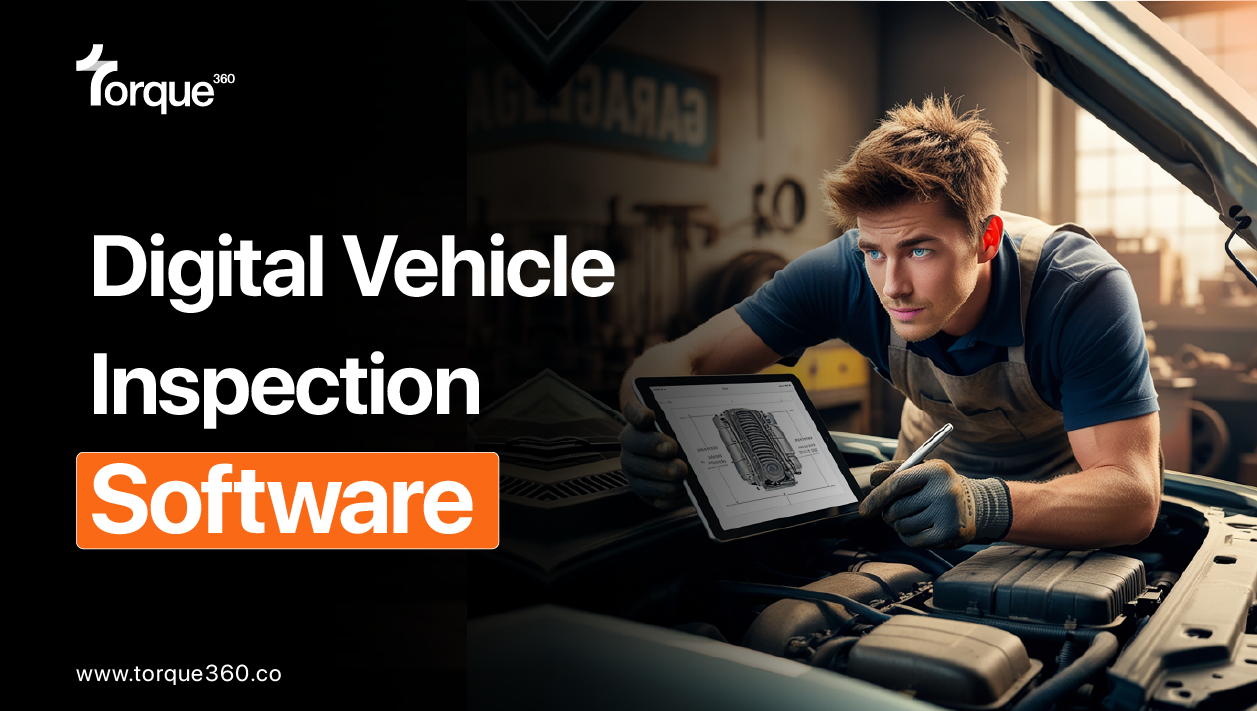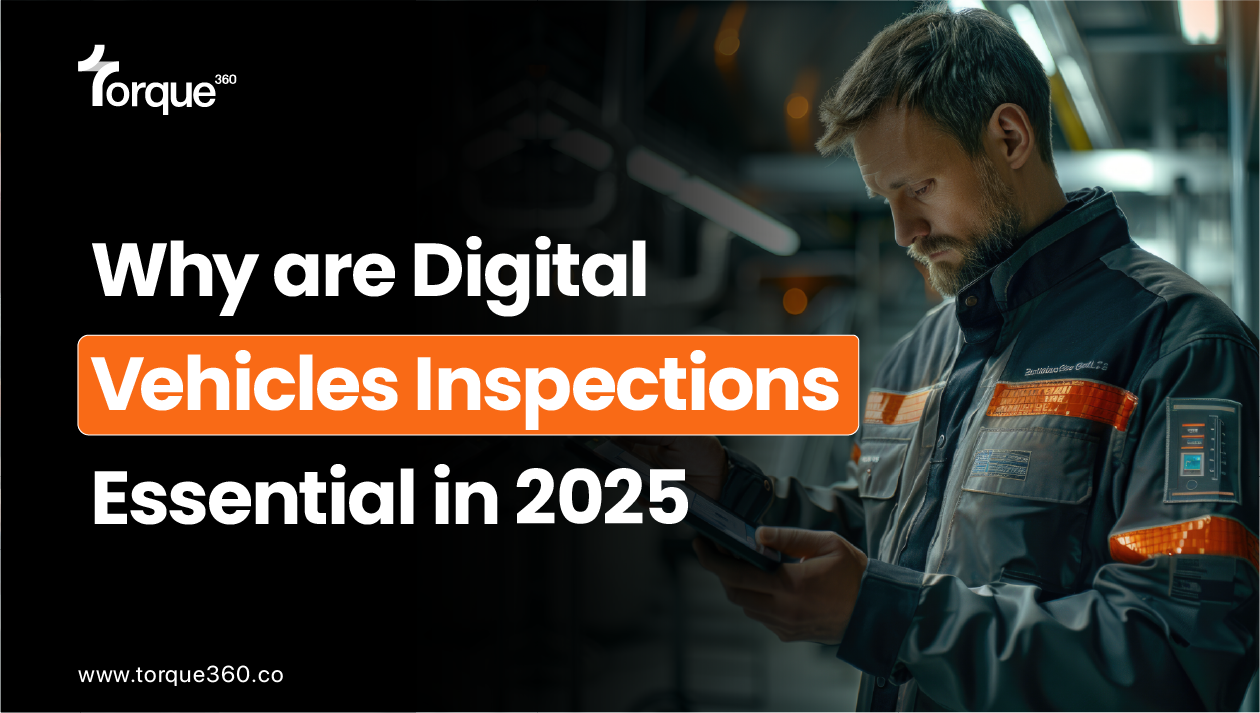The vehicle inspection process is an essential aspect of vehicle maintenance, ensuring that cars, trucks, and other vehicles are roadworthy and safe for use. However, in traditional manual inspection methods, human error often plays a significant role in the outcomes of the inspection. This error can manifest in various forms, such as missing critical damage, improper recording of issues, or unclear communication regarding the condition of the vehicle. Whether it’s a busy auto repair shop, a dealership with a large number of vehicles to inspect, or a fleet management team conducting routine checks, human mistakes can have serious consequences.
Automotive inspection software such as Torque360 provides an innovative solution that minimizes these errors while increasing the accuracy and speed of vehicle inspections. By automating key parts of the inspection process, Torque360 helps automotive professionals perform more reliable, consistent, and accurate vehicle inspections. This blog will explore how Torque360’s digital vehicle inspection software works, how it reduces human error, and the benefits it offers to businesses in the automotive industry.
The Problem of Human Error in Traditional Vehicle Inspections
Before the introduction of digital inspection tools, vehicle inspections relied heavily on manual methods, which inherently come with a high risk of human error. Inspectors often used paper forms to document their findings, wrote notes by hand, and performed their work under time constraints. These practices leave room for mistakes, whether it’s failing to spot an issue or recording it inaccurately.
Human errors in vehicle inspections can have a range of consequences, such as:
- Missed Issues: A technician might overlook minor but critical issues in the vehicle due to distraction or lack of attention.
- Inconsistent Records: Handwritten forms and notes can be difficult to read, leading to miscommunication and confusion.
- Unclear Communication: Without visual aids or clear documentation, it can be difficult for both the technician and the customer to understand the severity or nature of issues found.
- Time Constraints: In fast-paced environments, technicians may rush through inspections, increasing the likelihood of missing key details.
These issues highlight why reducing human error is essential for maintaining the quality and accuracy of vehicle inspections, improving customer satisfaction, and minimizing operational risks.
Torque360’s Digital Vehicle Inspection Software: Minimizing Human Error
Torque360’s digital vehicle inspection software is specifically designed to reduce human error in the inspection process. By digitizing the entire process, it ensures that inspections are more comprehensive, efficient, and accurate. Here’s how it works:
Predefined Checklists and Templates
Torque360 provides customizable inspection templates that cover all aspects of a vehicle’s condition, from exterior damage to tire pressure and engine health. These templates ensure that every item that needs to be checked is listed and followed. The structured approach helps inspectors adhere to a comprehensive inspection protocol, reducing the risk of missing important components.
Predefined checklists guide the technician through the entire inspection process, making it virtually impossible to skip any critical steps. Additionally, the software prompts users to fill out specific details, ensuring that inspectors do not overlook any part of the inspection.
Real-Time Data Entry
Instead of relying on handwritten forms that are susceptible to misinterpretation, Torque360 allows technicians to input data directly into a tablet or mobile device. This process eliminates the potential for transcription errors and ensures that data is recorded quickly and accurately. Real-time data entry ensures that all inspection results are stored immediately, preventing the possibility of losing valuable information.
Integration of Visual Evidence (Images & Videos)
One of the key features of Torque360’s digital vehicle inspection software is its ability to integrate images and videos directly into the inspection report. This feature is invaluable in minimizing errors because it allows the technician to visually document any issues found with the vehicle.
For example, if a vehicle has a dent or a worn-out tire, the technician can take a photo or record a short video and attach it to the inspection report. This helps ensure that issues are clearly identified and communicated to both the customer and any other professionals who might need to review the report later. Visual evidence eliminates any ambiguity that might occur with written descriptions, ensuring that both the technician and the customer are on the same page regarding the vehicle’s condition.
Cloud-Based Data Storage and Access
Once the inspection is complete, the report is securely stored in the cloud. This centralized storage allows technicians, managers, and clients to access inspection reports from any location at any time. Cloud-based storage ensures that all inspection data is organized, easily searchable, and protected from being lost or damaged.
Additionally, cloud storage ensures that inspection reports are always available for future reference, making it easier to track vehicle history over time. This centralized approach also improves collaboration, allowing different team members to review and update the inspection data as needed.
Consistent and Error-Free Reporting
By automating the data entry and report generation processes, Torque360 ensures that the final inspection report is standardized and error-free. Whether the inspection is performed by a new technician or a seasoned professional, the same standards and procedures are followed, reducing the risk of discrepancies across reports.
This consistency in reporting not only helps ensure accuracy but also builds trust with customers, who will appreciate receiving clear, detailed, and reliable inspection reports. The software automatically formats the report and generates easy-to-read documents that can be shared with clients or used for internal purposes.
The Key Benefits of Reducing Human Error in Vehicle Inspections
Reducing human error in the vehicle inspection process offers several key benefits to businesses and customers alike. By using digital vehicle inspection software like Torque360, businesses can realize the following advantages:
Increased Efficiency
By eliminating the need for paper forms, handwritten notes, and manual report creation, Torque360 streamlines the entire inspection process. Technicians can complete inspections faster, freeing up time for other tasks. This increase in efficiency also leads to cost savings for businesses, as less time is spent on administrative work and report generation.
Improved Accuracy and Consistency
The structured format of digital inspection software ensures that every technician follows the same inspection procedure, reducing the chances of missing important issues. Torque360’s prompts, checklists, and multimedia integration help create highly accurate and consistent reports, improving the quality of inspections across the board.
Enhanced Customer Experience
Customers are often more likely to trust businesses that provide transparent and comprehensive reports. With Torque360’s digital inspection tool, customers receive detailed reports with images and videos, allowing them to understand the exact condition of their vehicles. This transparency builds trust, leading to higher customer satisfaction and repeat business.
Reduced Liability and Legal Risk
The potential for human error in traditional inspections can expose businesses to legal and financial risks. Missing or inaccurately reporting an issue can result in costly lawsuits or liability claims. By minimizing human error, Torque360 helps businesses reduce these risks, providing clear, timestamped records of each inspection that serve as a reliable defense in the event of a dispute.
How Digital Inspection Software Is Reducing Errors
The use of digital inspection tools is already showing significant results in the automotive industry. According to a 2020 report from the Automotive Service Association (ASA), businesses that implemented digital inspection tools saw a reduction in customer complaints related to inaccurate reporting by 25%. Additionally, the average time spent on administrative tasks related to vehicle inspections was reduced by 30%.
These statistics demonstrate that adopting digital vehicle inspection software can significantly improve the accuracy, efficiency, and transparency of the inspection process, benefiting both businesses and customers.
The Future of Vehicle Inspections: Torque360 and Beyond
As technology continues to advance, digital vehicle inspection software like Torque360 will only become more integral to the automotive industry. Innovations in artificial intelligence (AI) and machine learning will likely make these tools even smarter, with the ability to analyze data in real-time and predict potential vehicle issues before they arise.
For businesses using Torque360, this evolution will result in even more streamlined and accurate inspections, further reducing human error and providing greater value to customers.
Conclusion
Minimizing human error in vehicle inspections is crucial for improving operational efficiency, building customer trust, and reducing liability risks. Torque360’s digital vehicle inspection software is designed to address the challenges posed by traditional inspection methods, providing a comprehensive, accurate, and transparent solution. With predefined checklists, real-time data entry, multimedia integration, and cloud-based storage, Torque360 ensures that each inspection is conducted with the utmost precision, reducing the chances of human mistakes.
By embracing digital solutions like Torque360, businesses in the automotive industry can enhance the quality of their vehicle inspections, improve customer satisfaction, and position themselves for future success in an increasingly digital world. The shift toward digital vehicle inspections is not just a trend—it’s a necessary evolution that ensures accuracy, consistency, and reliability in vehicle maintenance processes.





